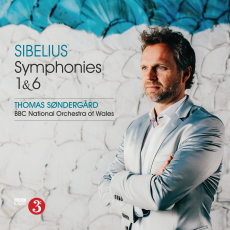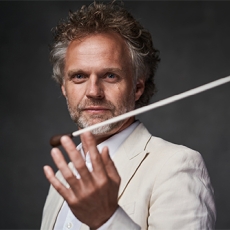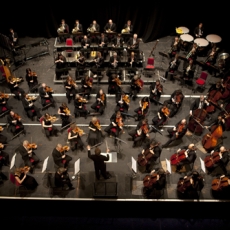Thomas Sondergard - Sibelius: Symphonies 1 & 6 - Audio Video Club of Atlanta
Once more at the helm of the BBC National Orchestra of Wales, the fine young Danish conductor Thomas Søndergård gives us illuminating performances in what is shaping up as an outstanding Sibelius cycle. That illumination, besides taking on the character of the shy twilights of Sibelius’ beloved Finland, also includes the truly magical moment in the opening movement of Symphony No. 1 in E minor, Op. 39 in which the song of the solo clarinet, which has struggled painfully “like a wounded bird” in the words of Sibelius scholar Erik Tawaststjerna, is succeeded by an outburst of brilliant sunlight and the music takes flight in the Allegro energico section—a moment that has to qualify as among the most thrilling in all of music.
Sibelius, who was disinclined to mix instrumental timbres, allows plenty of opportunities for delicious solos in this score: the afore-mentioned clarinet, the delicate use of the harp and the glowering reef of brass under the lightly scored string passages, also in the same opening movement, the solo cello in the lovely Andante, and the thrumming pizzicato strings in a brief but extremely varied Scherzo.
In the Allegro molto finale, in another instance of a Sibelius penchant for which my own pet name is “The Big Build-Up,” the pounding tympani and querulous strings make a stunning impression. This is a moment for which “massive crashing waves” seems a tame metaphor for the stormy climax that is allowed to rage here before the skies clear and the violins, in their very lowest register, sing a song of consolation and hard-won peace that any composer would give his right arm to have written. The coda offers a final moment of defiance before the curtain falls.
In other regards, what I said about Søndergård in my June, 2015 review of Symphonies 2 and 7 still goes: “Pacing is one of the most vital elements in interpreting a Sibelius score, and Søndergård obviously knows what he’s doing in this department. The underlying pace of the music tends to be slow, allowing ample time for great themes to grow out of the smallest 3 and 4-note kernels. At the same time, the various thematic sections often move at different tempi, creating problems for the unwary conductor for whom Sibelius is not a basic course in his repertoire.”
Symphony No. 6, Op. 104 is generally considered to be in D minor, though the tension created by Sibelius’ use of modality—in this case, the Dorian mode, which corresponds on the piano keyboard to the white-note scale beginning with D, keeps matters tantalizingly uncertain. The gentle eloquence, tinged with a sense of poignancy in the concluding bars of the finale, creates the dominant impression, to which Søndergård’s interpretation is always sympathetic. The composer calls for large orchestral forces, which are nonetheless handled with the greatest economy, allowing the rhythms in the music to move with surprising lightness.
Past commentators often described this symphony (and the Seventh as well) as “enigmatic.” Happily, latter-day conductors such as Søndergård are beginning to better define its subtly shaded moods. Sibelius himself cautioned us that, in the Sixth, “Rage and passion are utterly essential, but it is supported by undercurrents deep under the surface of the music.” The dominant impression I get from the present performance is one of very slowly unfolding organic changes, like the coming of the seasons in nature—or in the span of a human life.


